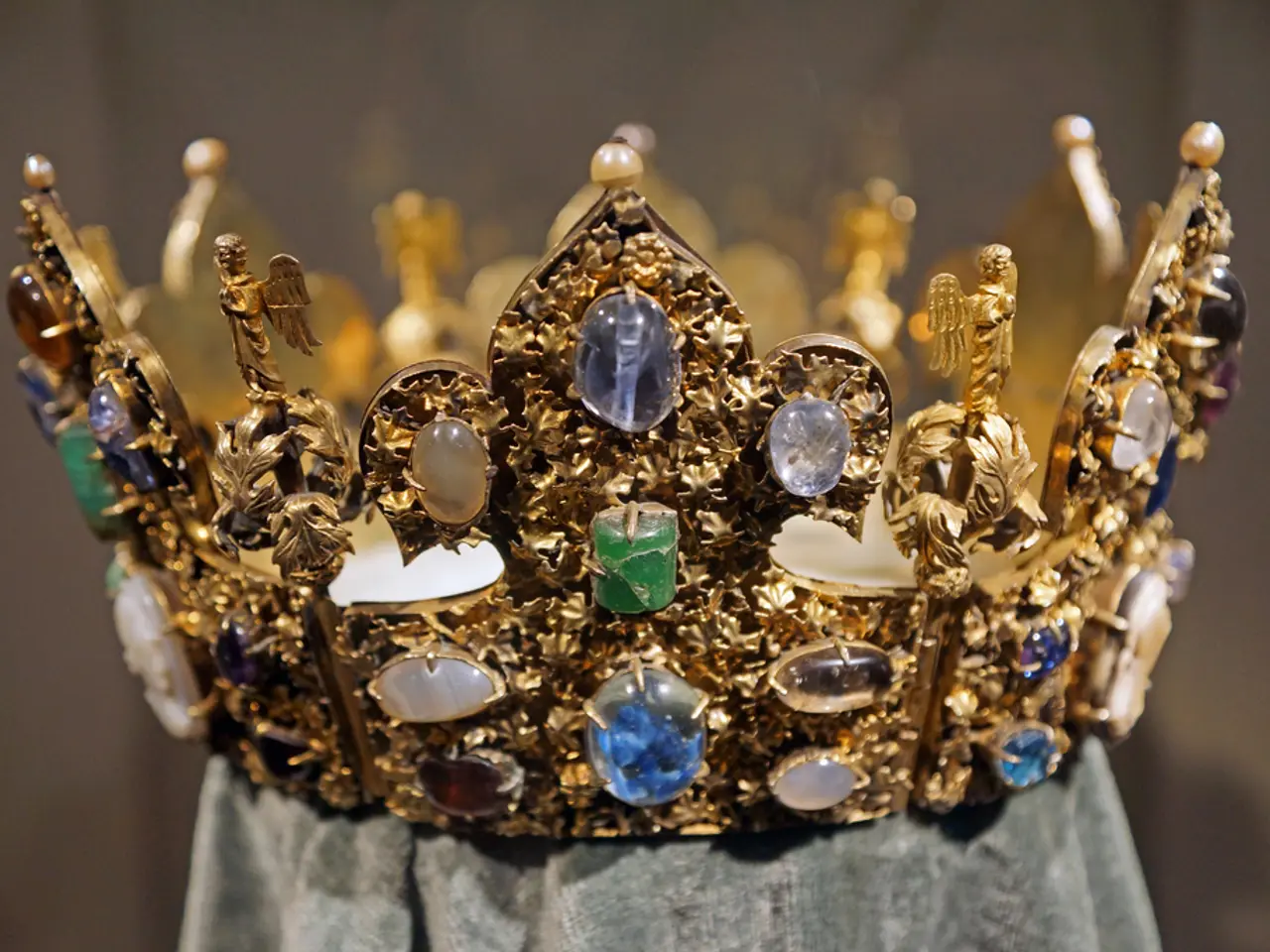Unveiling the Scarce Allure of Red Diamonds: A Gemmology Deep Dive into their Uncommon Origin
In the realm of precious gems, red diamonds stand out as the epitome of rarity and value. These exceptional stones, with their captivating hue, are the result of unique geological conditions that make them among the rarest and most valuable coloured diamonds in the world.
The Moussaieff red diamond, discovered in Brazil in the 1990s and cut to a 5.11ct trilliant, is the largest red diamond known. Its smaller counterpart, the Hancock red diamond, found in Brazil in 1987, weighs 0.95ct and sold for $880,000, showcasing the high demand for these rare gems.
The formation of these rare red diamonds requires specific geological conditions, primarily involving extreme depth and pressure deep within the Earth’s mantle, about 100 miles beneath the surface, under high temperature and pressure. During this process, internal structural irregularities or strain—caused by deformation or plastic distortion—produce the red color by altering how light passes through the diamond.
Studies of fancy red diamonds, such as the Winston Red diamond, reveal low concentrations of aggregated nitrogen defects and high internal strain, contributing to their unique optical properties. Unlike blue diamonds (boron) or yellow diamonds (nitrogen), the red color is not caused primarily by impurities but by the lattice defects from plastic deformation during formation.
Other factors contributing to the rarity of red diamonds include the need for deformation during continental collision, the development of a pink to red color instead of the more common brown, and the color being intense enough to justify grading as red. The number of unmodified red diamonds is estimated to be less than 30, but may be in the low hundreds depending on grading criteria and information source.
Moreover, colour in brown, pink, and red diamonds is concentrated in zones that correspond to glide planes, with more abundant glide planes resulting in stronger colour. This further adds to their scarcity.
The Argyle mine in Western Australia, though primarily known for its production of white diamonds, was the main world producer of pink to red diamonds, contributing to the rarity of these coloured stones. The Argyle mine produced the highest proportions of brown, pink, and red diamonds among all diamond producing countries.
In conclusion, the formation of rare red diamonds is a testament to the Earth's geological processes, resulting in a gemstone that captivates the imagination and commands a high value in the jewellery world. Their rarity, combined with their unique optical properties, makes them a coveted treasure for collectors and connoisseurs alike.
- A lab class on gemmology could delve into the unique formation process of red diamonds, shedding light on how science uncovers their captivating rarity.
- As more people pursue health-and-wellness, fitness-and-exercise regimes, some might find solace in the acquisitions of rare gems like red diamonds, symbols of value that science has found intriguingly unique.
- With technological advancements, gadgets can now scan and assess the quality of diamonds, including the coveted red diamonds, making it easier to protect academicwork related to diploma courses in gemmology and jewelry appraisal.
- An event dedicated to the appreciation of precious gems could feature a collection of red diamonds, demonstrating the value and esteem associated with these exceptional stones in the realm of science and technology.
- Given their rarity and high demand, red diamonds have become a symbol of status and wealth, making them a suitable addition to various events, showcasing the fusion of health-and-wellness, fitness-and-exercise enthusiasts with the world of diploma-holding gemmologists and technology connoisseurs.




